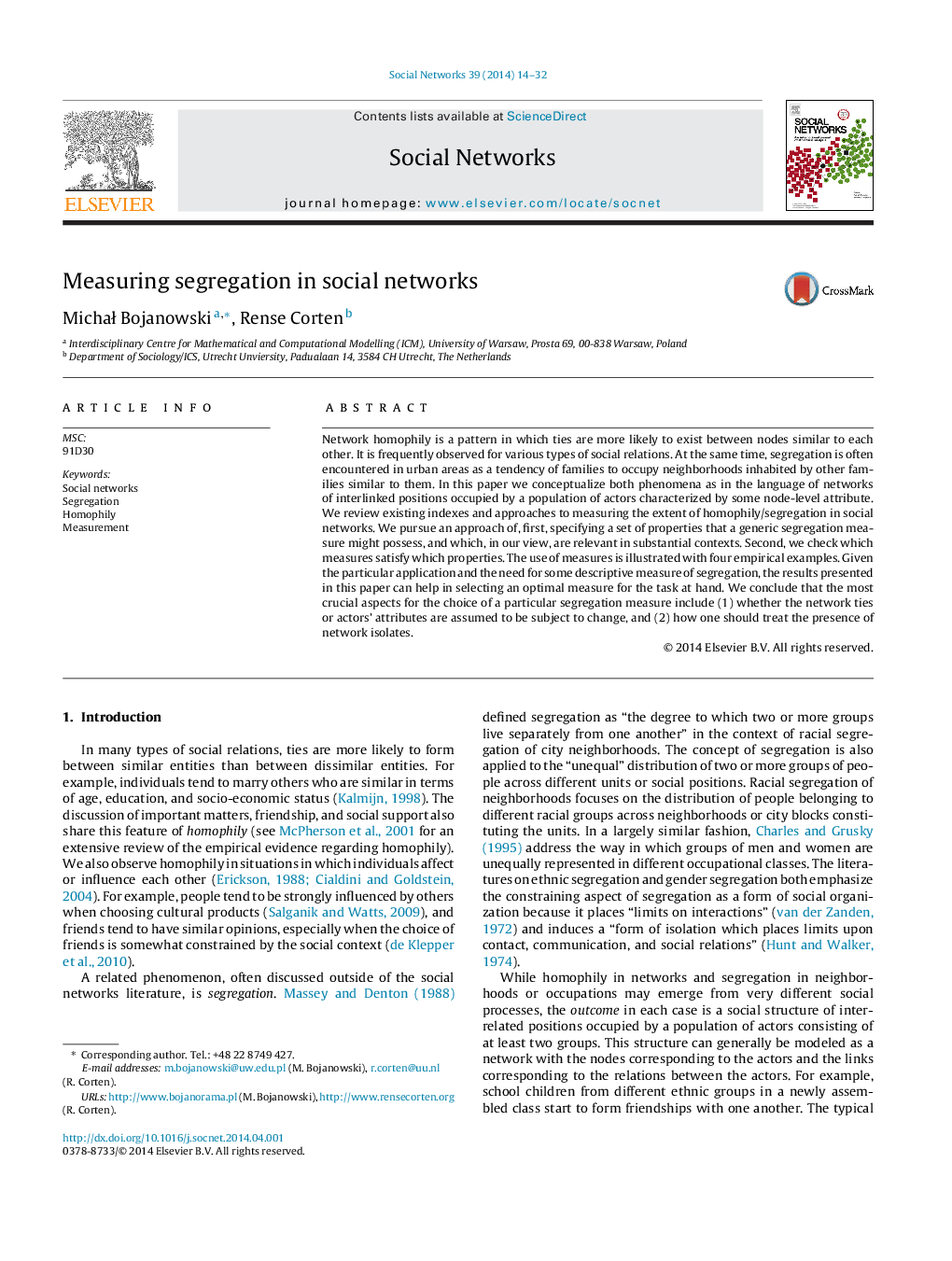| کد مقاله | کد نشریه | سال انتشار | مقاله انگلیسی | نسخه تمام متن |
|---|---|---|---|---|
| 1129189 | 1488860 | 2014 | 19 صفحه PDF | دانلود رایگان |
• Set of desirable properties for network segregation measures is proposed.
• 11 existing network segregation measures are reviewed and their properties checked.
• Direction of dependence between ties and node attributes is important for segregation.
• It is also important how measures evaluate the presence of network isolates.
• Guidelines for choosing appropriate measure given a research context are provided.
Network homophily is a pattern in which ties are more likely to exist between nodes similar to each other. It is frequently observed for various types of social relations. At the same time, segregation is often encountered in urban areas as a tendency of families to occupy neighborhoods inhabited by other families similar to them. In this paper we conceptualize both phenomena as in the language of networks of interlinked positions occupied by a population of actors characterized by some node-level attribute. We review existing indexes and approaches to measuring the extent of homophily/segregation in social networks. We pursue an approach of, first, specifying a set of properties that a generic segregation measure might possess, and which, in our view, are relevant in substantial contexts. Second, we check which measures satisfy which properties. The use of measures is illustrated with four empirical examples. Given the particular application and the need for some descriptive measure of segregation, the results presented in this paper can help in selecting an optimal measure for the task at hand. We conclude that the most crucial aspects for the choice of a particular segregation measure include (1) whether the network ties or actors’ attributes are assumed to be subject to change, and (2) how one should treat the presence of network isolates.
Journal: Social Networks - Volume 39, October 2014, Pages 14–32
